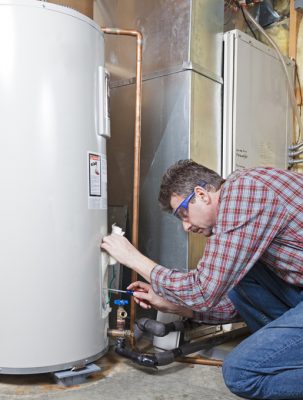Ways to Maintain Your Home's Hot Water System in Good ConditionKey Guidance on Caring for Your Home's Hot Water System
Ways to Maintain Your Home's Hot Water System in Good ConditionKey Guidance on Caring for Your Home's Hot Water System
Blog Article
Just how do you really feel in relation to Water Heater Maintenance Tips You Can't Afford to Forget?

Warm water is essential for everyday convenience, whether it's for a revitalizing shower or washing dishes. To ensure your warm water system runs successfully and lasts much longer, normal maintenance is essential. This article offers functional pointers and understandings on how to maintain your home's hot water system to prevent interruptions and pricey fixings.
Intro
Keeping your home's warm water system could seem challenging, but with a couple of straightforward actions, you can ensure it operates efficiently for several years to come. This guide covers whatever from recognizing your hot water system to DIY maintenance ideas and recognizing when to call in professional help.
Value of Preserving Your Hot Water System
Routine upkeep not just expands the life expectancy of your hot water system however likewise ensures it operates effectively. Disregarding upkeep can bring about decreased performance, higher energy bills, and even premature failure of the system.
Indications Your Warm Water System Demands Upkeep
Understanding when your hot water system needs interest can stop significant concerns. Keep an eye out for indicators such as irregular water temperature level, weird sounds from the heating system, or corroded water.
Understanding Your Hot Water System
Prior to diving right into upkeep jobs, it's handy to recognize the standard elements of your hot water system. Usually, this includes the water heater itself, pipes, anode rods, and temperature controls.
Monthly Maintenance Tasks
Normal month-to-month checks can aid capture small problems before they escalate.
Flushing the Hot Water Heater
Flushing your water heater removes sediment build-up, boosting effectiveness and extending its life.
Checking and Replacing Anode Rods
Anode rods protect against deterioration inside the storage tank. Examining and replacing them when worn out is critical.
Evaluating and Adjusting Temperature Setups
Changing the temperature settings ensures optimum efficiency and safety.
Do It Yourself Tips for Upkeep
You can carry out several upkeep jobs yourself to maintain your warm water system in top problem.
Looking for Leaks
On a regular basis inspect pipelines and links for leaks, as these can bring about water damages and higher costs.
Checking Pressure Alleviation Valves
Checking the pressure safety valve guarantees it functions appropriately and stops excessive stress buildup.
Protecting Pipelines
Protecting warm water pipes minimizes heat loss and can save power.
When to Call a Professional
While DIY upkeep is useful, some concerns need professional experience.
Complex Concerns Requiring Specialist Help
Instances include significant leaks, electric problems, or if your hot water heater is consistently underperforming.
Regular Specialist Maintenance Perks
Professional upkeep can include complete examinations, tune-ups, and guaranteeing conformity with security criteria.
Conclusion
Normal maintenance of your home's hot water system is crucial for efficiency, durability, and price savings. By adhering to these tips and understanding when to look for professional assistance, you can make certain a reputable supply of warm water without unanticipated disruptions.
How to Maintain an Instant Hot Water Heater
Before tinkering with your hot water heater, make sure that it’s not powered on. You also have to turn off the main circuit breaker and shut off the main gas line to prevent accidents. Also turn off the water valves connected to your unit to prevent water from flowing into and out of the appliance. 2. When you’re done, you have to detach the purge valves’ caps. These look like the letter “T” and are situated on either side of the water valves. Doing so will release any pressure that has accumulated inside the valves while at the same time avoid hot water from shooting out and burning your skin. 3. When the purge valves’ caps are removed, you have to connect your hosing lines to the valves. Your unit should have come with three hoses but if it didn’t, you can purchase these things from any hardware or home repair shops. You can also get them from retail stores that sell water heating systems. Read the user’s manual and follow it to complete this task properly. When the hosing lines are connected, open the purge port’s valves. 4. You should never use harsh chemical cleaners or solutions when cleaning your unit. Make use of white vinegar instead. It should be undiluted and you’ll probably use about 2 gallons. 5. Now flush your water heater. This task should probably take about 40 minutes. We can’t give you specific directions for this because the procedure is carried out depending on the type, model and brand of your heater. With that being said, refer to the user’s manual. 6. When you’re done draining the unit, you have to turn off the purge port valves again. Remove the hosing lines that you earlier installed on each of the water valves. Put the valve caps (purge port) back in their respective places and be very careful so as not to damage the rubber discs that are found inside these caps. 7. Now that everything’s back in place, check your user’s manual again to find out how to reactivate your water heating system. 8. Once it is working, turn one of your hot water faucets on just to let air pass through the heater’s water supply pipes. Leave the tap on until water flows smoothly out of it. https://www.orrplumbing.com/blog/2014/september/how-to-maintain-an-instant-hot-water-heater/

I was guided to that write-up on What Kind of Maintenance Do Water Heaters Need? through an associate on a different site. Do you know about somebody who is excited by the subject? Feel free to share it. We treasure your readership.
Request An Estimate Report this page